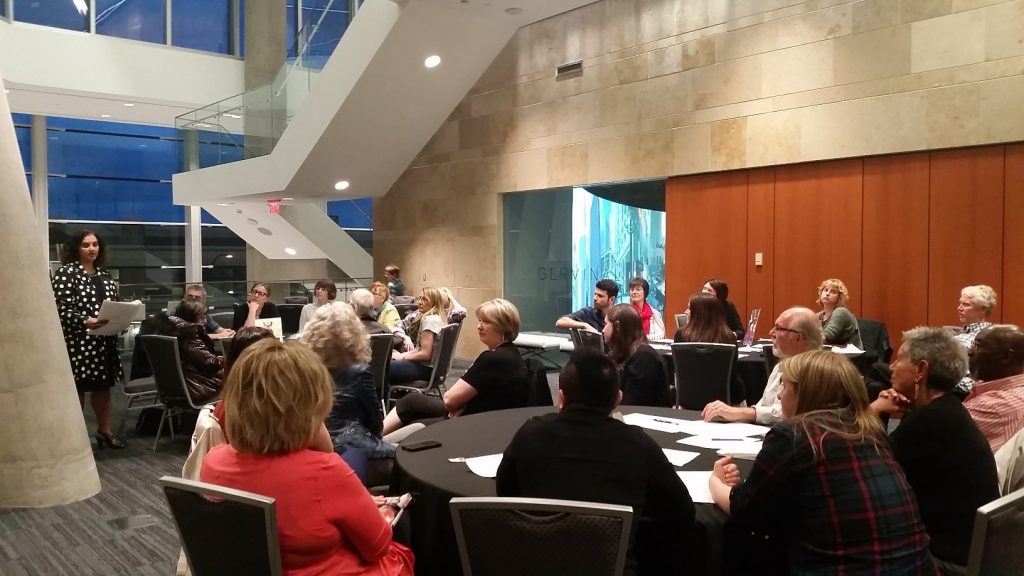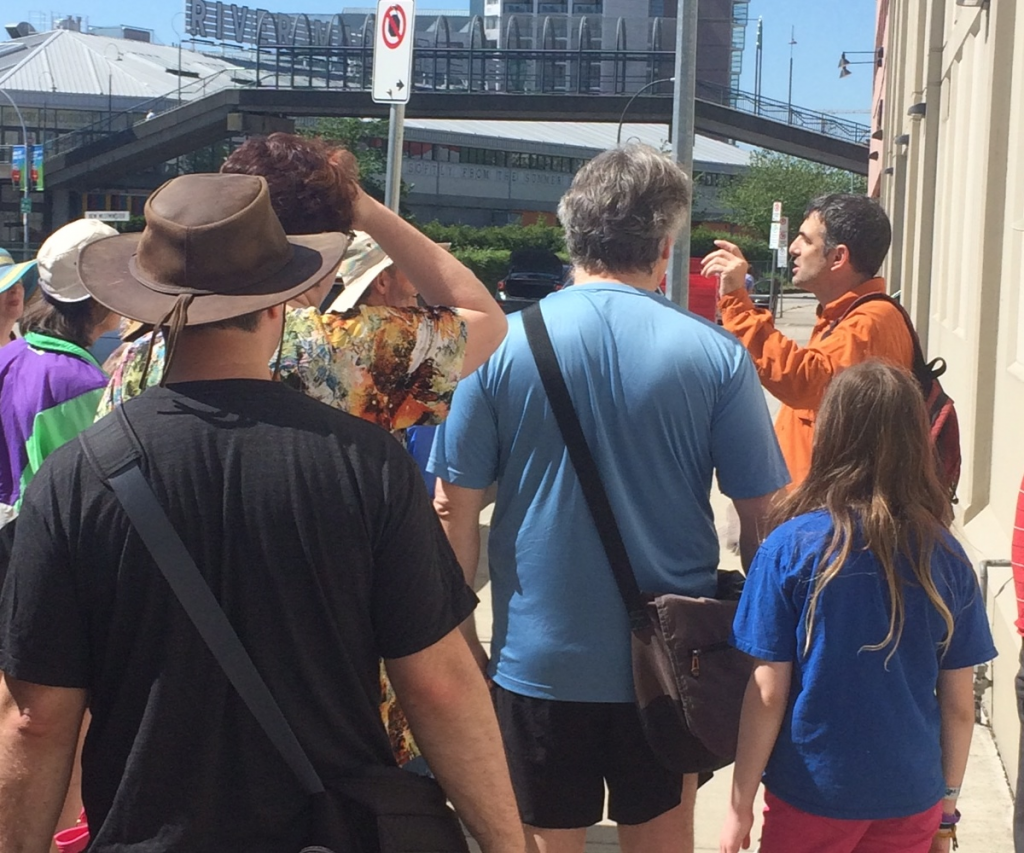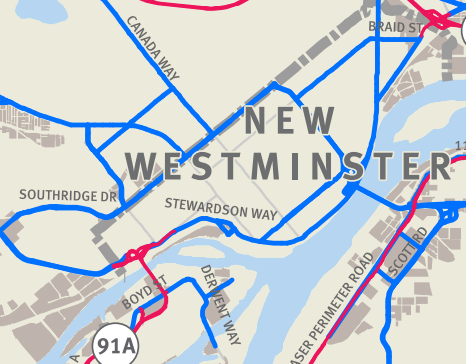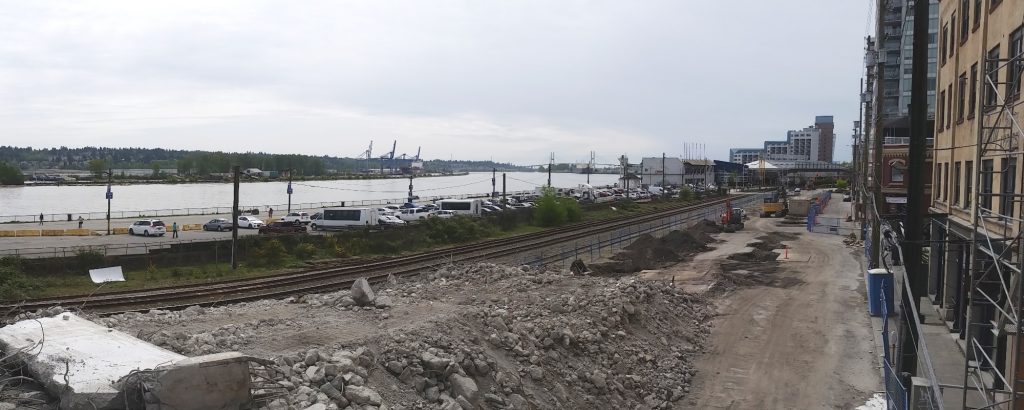Like I said in my last post, Monday’s meeting was a long one (look at that poor lost soul above as he briefly enters his happy place, 5 hours in), so I broke up my report into two blogs. This is Part 2 – everything that took place outside of the Public Hearing.
Partly because of the recognition of the evening’s long agenda and, with anticipation of a lengthy Public Hearing, some Regular Council items were dealt with in a “Workshop” format during the day, so it was more like the old Committee of the Whole model. It was a public meeting with video record and proper notice and all, just during the day.
Note: This wasn’t a real “workshop” the way I define it. That was what we did on May 16 instead of a regular Council Meeting, as we discussed parts of the Official Community Plan development. If you are at all interested in seeing the sausage-making parts of how this Council makes decisions and interacts with professional staff in a slightly less formal setting, I think that workshop is a pretty good representation of the types of conversations we have when we start to dig into things, and it may be illustrative to watch the video for some people. Including the comedy of how long it takes for us all to sit down around a table.
OPEN WORKSHOP
Tourism New Westminster Five-Year Strategic Plan
We had a presentation from Tourism New Westminster on their strategic plan, and a proposed path forward for the organization. There is a bunch of background around this topic relating to Council increasing annual funding for TNW over the last year as a interim measure to help with their transition to a new office and new vision, and in anticipation that the Hotel Room Tax (“MRDT”) that most Municipalities use to augment their tourism promotion programs.
The 5-year vision presented to Council as a draft was full of interesting ideas, but it also included us looking at some new, and increased, funding to leverage the MRDT and external Grants in a pretty significant way. There will be more discussion between the TNW Board and the city leading from this!
We moved the following items by Consent:
Report on Major Purchasing Transactions for the Period January 1 to April 30, 2016
This is a list of everything we purchased as a City in the first third of 2016, at least everything we paid for. Not every pencil and ream of paper, but all purchases with budgets above $50,000. As part of our legal reporting requirements, we list the winning contractor for competitive bids, and even list losing bidders. Not a regular business practice, but something Cities are required to do in the spirit of transparency.
Some of these purchases were just regular invoicing of ongoing projects. This is why, for example, we cut a cheque for $108K for our external engineer for work to date on the Q2Q bridge, although we anticipate we will require about $4 Million in services from them (assuming we find a solution to the Q2Q bridge that we can move forward on). The $4 Million is listed in our 5-year capital plan, but doesn’t necessarily mean we are going to spend it.
2015 Statement of Financial Information
This is more regulatory reporting. This is our official audited financial statements, in the format required by the legislation. In 2015, we collected $69 Million in taxes, an equal amount in utility charges, and about $42 Million in other revenues. We had about $14 Million in Surplus, but through the magic of accounting and tangible capital assets, that means we increased our financial assets by something closer to $9 Million. That surplus was budgeted for, and is directed to various reserves funds to pay for upcoming capital projects.
There is more to read here, including how the City stores its Investments, how our DCC funds are doing, our long-term debt situation, etc.
We also have to report our Council wages, and our expenses, it cost you a little over $40K to have me go to meetings and pontificate. My expenses were a little lower than most because I wasn’t able to attend a conference last year. I will definitely be attending UBCM this year, so that should catch me up.
There is also the annual list of employee remuneration, which I personally hate. In few other industries is a professional making $75,000 – $150,000 required to publically disclose their wages, and have their wage printed in the local paper next to their picture. I understand the public’s right to know what the City pays for public employees, but I would much prefer if these lists provided the Job Title, and not the employee’s personal name. Frankly, it doesn’t matter if the City is paying Jim or Alice $120,000 to be the General Manager of Some Section, what matters is that we pay the General Manager of Some Section $120,000 dollars. I don’t see how the way we do it now serves the public interest, other than puerile voyeurism. Rant over.
The following items were either removed from Consent or part of the regular agenda:
100 Braid Street: Principles for an Agreement between Urban Academy and the City for the Community Use of Proposed School Facilities
This item allowed Council to approve the principles of a legal agreement between the City and Urban Academy regarding a commitment made by Urban Academy to provide community access to some of their facilities.
This meeting was held prior to the Public Hearing where the fate of the urban Academy proposal would be discussed, so the legal agreement does not, practically, exist. However Staff felt it important (and I agree) that Council understand the framework through which a public amenity related to the project would be managed prior to us deciding if we want to approve the project that would bring that amenity.
Council approved the principles unanimously.
Proposed Widening of Blackley Street
Similar to the item above, this references a project coming to Public Hearing in the evening, the Platform Properties plan for Queensborough. The dedication of land to widen Blackley Street is complicated, because some of the lands along this right of way are not part of the development package, and we cannot take the lands away from a property owner who does not want to dedicate it. It is likely that there will be various iterations of Blackley Street between now and the final alignment, which could be decades down the road, and Council was concerned about how Engineering would make this street operate safely over the various phases of developments.
I was satisfied with the drawing provided by Staff, although admittedly, the presentation could have been a little clearer.
National Aboriginal Day Activities at Anvil Centre
There are going to be a series of free events marking National Aboriginal Day at the Anvil Centre on June 21st. Check your calendar, and plan to show up!
Joint Municipal Licensing for Film Industry
Councillor Puchmayr referred to staff the question if the Filming Industry is appropriate for joint licensing, much like the inter-municipal business licensing model the City has undertaken for contractors and the building industry. Similar to that industry, the Film Industry is mobile and regional, as opposed to operating only in one municipality, and there is a potential for great synchronization between Cities to help reduce red tape for them.
Tree Bylaw update
We have had a tree Bylaw for several months now, and we anticipate there may be a few teething problems, or a few places where members of the public have raised concerns that staff or Council did not anticipate. We will be having a review of the Tree Bylaw in the July 11 meeting.
I think that Council was clear when the Bylaw was passed that we want a high level of protection for trees and want to be proactive towards renewing our Urban Forest, mostly because that is what we heard from the public when we spent a year doing public consultation on the issue. Since the Bylaw was passed, I have had a couple of concerns raised by individual members of the public, but mostly I have heard overwhelming support for tree protection. It is not the level of protection that is a problem, but rather a few (hopefully) resolvable details of implementation.
Investment Report to April 30, 2016
We provide a report on our investment portfolio every year as part of our financial reporting. This money is mostly dedicated reserves for things like sewer and infrastructure renewal, and it is saved mostly with the Municipal Finance Authority. This is a very secure, and moderate yield, investment strategy.
There will be some discussion at the UBCM Conference this year about the MFA divesting from fossil fuel assets. Should be an interesting chat.
After dinner, and our lengthy Public Hearing (reported here earlier), we moved on to our Regular Evening Meeting, starting with the dispatching of the Bylaws referred to Council from the Public Hearing:
Zoning Amendment (129 Tenth Street) Bylaw No. 7839, 2016
This Bylaw amendment supporting the 8-unit townhouse development in Brow of the Hill was given third reading by Council.
Zoning Amendment (602 Ewen Avenue) Bylaw No. 7840, 2016
This Bylaw amendment supporting the 16-unit townhouse development in Queensborough was given third reading by Council.
Heritage Revitalization Agreement (313 Queen’s Avenue) Bylaw No. 7834, 2016
Heritage Designation Bylaw (313 Queen’s Avenue) No. 7835, 2016
These Bylaws supporting the permanent protection of the single family house in Queens Park was given third reading by Council
Zoning Amendment Bylaw (501-505 Twelfth Street) No. 7818, 2016
This Bylaw amendment supporting the 5-story residential apartment complex on the corner of 12th Street and Fifth Ave was given third reading by Council.
Zoning Amendment (325 and 329 Ewen Avenue) Bylaw No. 7811, 2016
This Bylaw amendment to make the residential land use legally conforming in exchange for establishing utility rights-of-way for future City services was given third reading by Council.
Zoning Amendment Bylaw (Brewery District) No. 7841, 2016
This Bylaw amendment to add a market rental component to the Brewery District mix of uses, and to make changes to the type of commercial activity that is permitted was given third reading by Council.
Official Community Plan (100 Braid Street) Bylaw No. 7836, 2016
Zoning Amendment Bylaw (100 Braid Street) No. 7837, 2016
This Bylaw amendment to support the building of a 450-student school and a residential tower at the corner of Braid Street and Rousseau Street was given third reading by Council.
Official Community Plan Amendment Bylaw No. 7822, 2016
Zoning Amendment (Queensborough Special Study Area) Bylaw No. 7823, 2016
These Bylaws supporting the designation of uses for the Queensborough Special Study Area to develop a mix of residential and commercial space was given third reading by Council
Following these Bylaws, we opened official Opportunities to be Heard on three other projects.
Development Variance Permit 00607 for 413 Alberta Street
This request was to make some modifications of a 1921 house in upper Sapperton. The house is on a small lot, which pushes some of the requested changes into the world of variances. The owners want to replace a front porch that was removed by former owners, but would be considered a fundamental design feature of the house, so they are fundamentally replacing a historically legally non-conforming porch. The new dormer they wish to add brings the living space of the house up to the FSR maximum (no variance needed) but because they need to match the existing roof pitch, the new maximum height of the house will be 9 inches higher than permitted. Thirdly, they want to build a garage, but the minimum useful garage size (440 square feet) is 1.4% larger than the maximum allowable accessory building size for a lot as small as theirs.
We received one piece of correspondence opposed to the request, but no-one showed up at the Opportunity to be Heard to speak on it. I am satisfied that the variances requested are reasonable and generally comply with existing policy.
Council voted to approve the DVP, and allow the project to go ahead.
Development Variance Permit 00606 for 810 Quayside Drive
The River Market wants to create some colorful banners along their northern side that brighten up the façade of the building and call attention to their tenants. These signs do not comply with the letter of the Sign Bylaw, which is why they came to Council for a variance.
There was no correspondence received on this application ,and no-one came to speak at the Opportunity to be Heard. The designs look tasteful and do appear to add a bit of colour to the outside of the building above a pretty drab road/loading bay/ railyard. I have no reason to oppose this idea.
Council moved to approve the Variance.
Road Closure Bylaw No. 7824, 2016
This Bylaw is related to the development at 12th Street and fifth Ave. The building and the adjacent single family home are separated by a lane allowance that is very unlikely to ever be used by the City. The City is formally closing this lane, but as we are disposing of a City asset, we need to go through the Opportunity to be Heard routine. We received no correspondence or public comment, so Council referred the Bylaw to the June 13th meeting.
The following items were removed from the Consent Agenda for discussion:
Food Truck Policy and Bylaws
It has been a pretty long process, working on policy development, a couple of round of public consultation and discussions with the business community, and more policy development, but it looks like New Westminster is ready ot have a Bylaw regulating food trucks ready for June 20th Public Hearing.
C’mon out and tell us what you think!
1031 Sixth Avenue: Heritage and Revitalization and Heritage Designation – Bylaw for First and Second Readings
This somewhat complicated project is not dead yet, despite some cynicism in the local blogosphere. The Bylaw to support the protection of the house and the building of a second house on the lot will go to Public Hearing on June 20. C’mon out and tell us what you think!
The following items in the evening meeting were moved on consent:
401 & 451 Salter Street: Temporary Use Permit for Film Production Studio
This is an underutilized piece of Industrial Property in Queensborogh. Large old industrial buildings are desirable places for shooting films and TV shows, but that does not necessarily comply with the zoning. The City is being asked to issue a Temporary Use Permit to allow a film company to set up some studio space for current productions. I’m just glad someone is using the space and generating some revenue from what is a pretty derelict piece of land.
900 Carnarvon Street (Tower Four – Plaza 88) – Development Agreement Bylaw for Consideration of Three Readings
You may remember back in 2015 when Council gave third reading to a zoning amendment that supported a planned dedicated-rental highrise for the last spot in thePlaza88 development – the currently empty lot at the corner of Carnarvon and 10th Street. The Bylaw has not yet been adopted, as there were some details to work out, some arising in the Public Hearing. Finalizing a Development Agreement is one step towards eventual Adoption. This is the agreement between the Developer and City around how the building and the City’s infrastructure will interact: sidewalks, driveways, signage, sewer connections, street lighting, etc. etc.
Council referred this Bylaw for three readings.
Amendment to Electrical Utility Bylaw – Adding New Rates 134, 241 and 500
The City’s Electrical Utility is, like everything else in the City, managed by Bylaws. The rates we pay for electricity, and how they are charged, is regulated through the Bylaw. This change to the Bylaw is doing two things, both with an eye to promoting more efficient use of electricity in the City.
The new rates are for multi-family buildings, designed to make it easier for new buildings to use energy sharing and thermal energy (like, for example, hooking up to a District Energy Utility) by pooling the electricity billing within a building and turning over the metering of individual units to the building management (be it a Strata or a Management Company).
The second change is a framework to permit net metering. If you want to put a solar panel on your roof, run a wind turbine, or hook up a thousands hamster wheels and generate your own electricity to reduce your power bill, but still stay on the City grid to work as your “battery” or back up, you will soon be able to do this!
As long as your energy source is renewable (no running the Honda generator in the backyard or Mr. Fusion machines, folks) and you get a two-way meter hooked up to the City’s specs, you can co-generate. Bring out the solar panels!
Commissioner – Electric Utility Commission Recruitment
The Electrical Utility is run by an Electrical Utility Commission, a board of utility professionals who oversee the operation of the Utility on behalf of Council. We are making some changes to the make-up of that Commission because the Utility is being asked to enter into business areas not normally part of their purview – namely setting up a District Energy Utility and overseeing a fibre optic network to bring Gigabit service to large parts of New Westminster.
Finally, we had a raft of Bylaws to go through, which we did thusly:
Heritage Designation Bylaw 7853, 2016
Heritage Revitalization Agreement Bylaw No. 7854, 2016
This plan for the heritage home on 1031 Sixth Ave (mentioned above) received two readings. It will go to Public Hearing on June 20.
Mobile Food Vending Bylaw No. 7850, 2016
The Bylaws to regulate (and therefore permit) Foodtrucks on selected City streets received two readings. is plan for the heritage home on 1031 Sixth Ave (mentioned above) received two readings. It will go to Public Hearing on June 20.
Development Services Fees Amendment Bylaw 7852, 2016
Bylaw Offence Notice Amendment Bylaw 7851, 2016
These Bylaws that support the Foodtruck Bylaw above by setting fees and penalties were given three readings.
Downtown Development Agreement (900 Carnarvon Street) Bylaw No.7855, 2016
This Bylaw to formalize the Development Agreement for Building 4 at Plaza88 (described above) was given three readings.
Electrical Utility Amendment Bylaw No. 7848, 2016
This Bylaw to set a new electrical rate structure for some multi-family buildings, and to allow Net Metering for those interested in renewable alternative generation on their premises (described above) was given three readings.
And that was the end of a very long meeting. See you again next week.
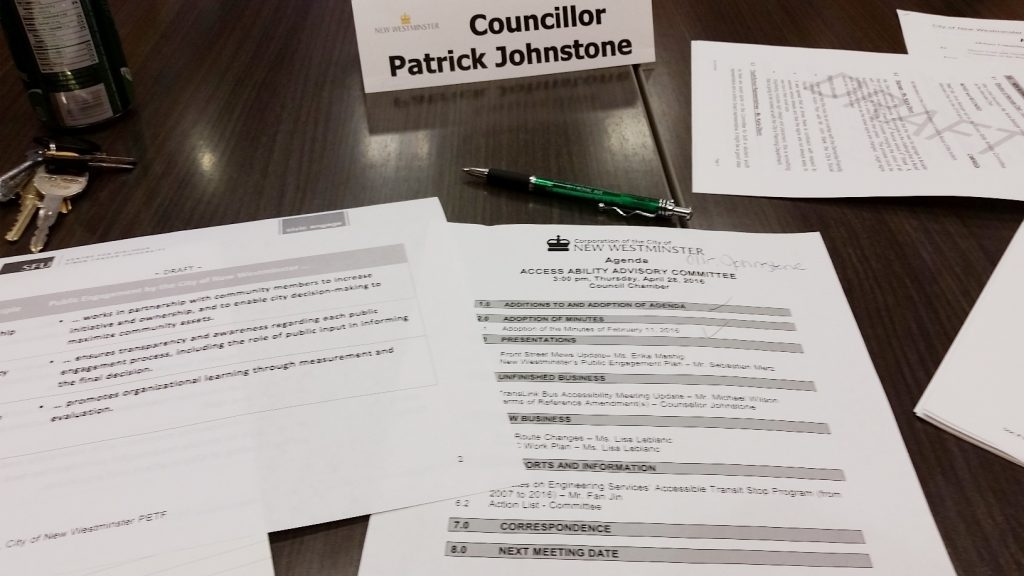 With a fair smattering of this:
With a fair smattering of this: